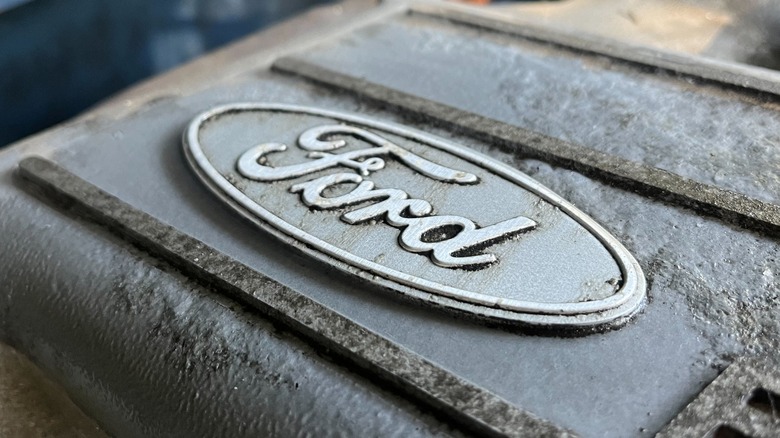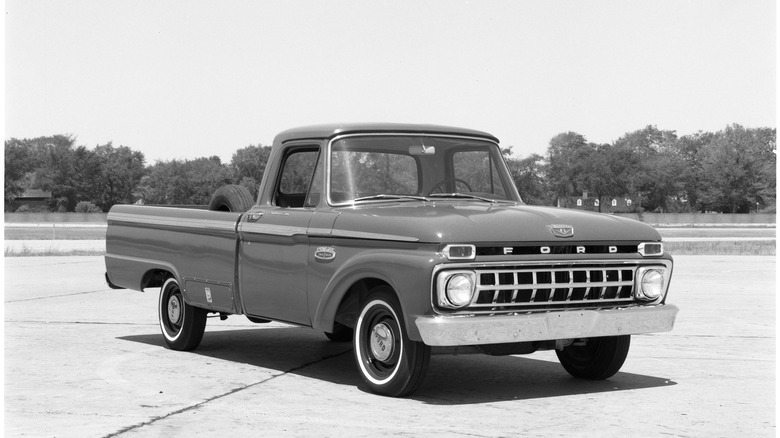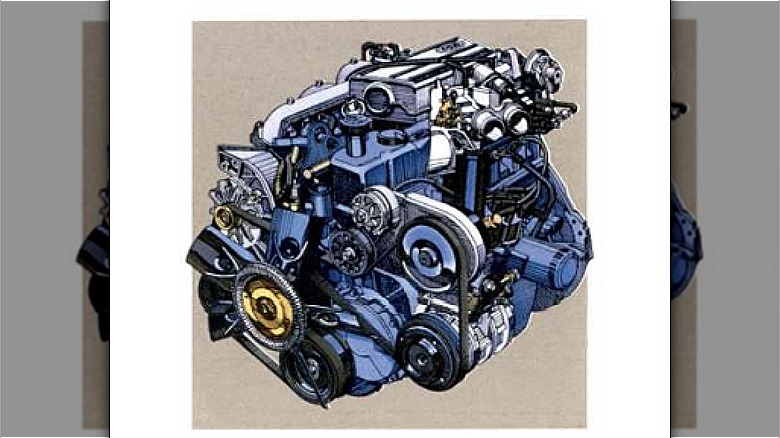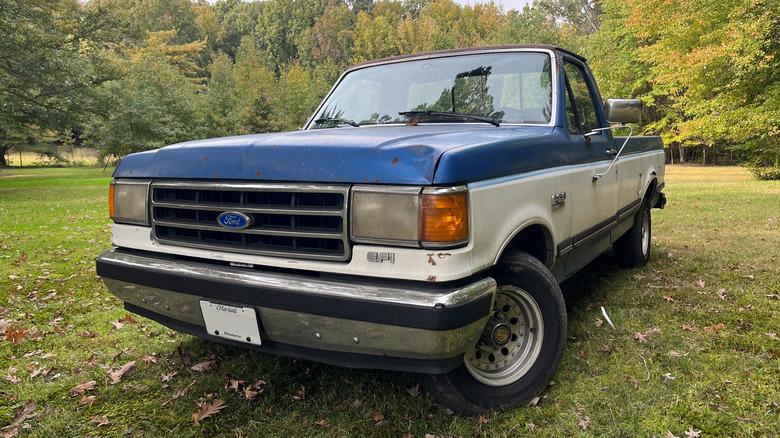Why Ford Used The Same Engine For Over 30 Years
The automotive world is changing at a rapid pace. It seems that every time one turns around, there's a new EV coming out or an automaker unveils the latest round of technology it claims is groundbreaking. The sheer volume of new information and technology emanating from the automotive sector can sometimes make your head spin.
Occasionally, automakers take the slow approach to innovation and change. For example, the Dodge Challenger remained much the same for over a decade and slowly transformed from a retro-inspired muscle car to a fire-breathing supercharged track monster. For every car like the Plymouth Prowler where it's only around for a few years before overstaying its welcome, there are a few automotive mainstays that remain on the scene for decades.
One such automotive pillar isn't a car itself, but an engine: the Ford 300 cubic-inch inline six-cylinder. The model has rested comfortably in the engine bays of countless Ford vehicles from the mid-1960s all the way until the 1990s before Ford found something to replace it with.
The Ford engine is remembered fondly
According to MotorTrend, the Ford 300 I6 was first introduced in 1965 as an optional engine for the automaker's trucks and wasn't replaced until the 1997 model year. The engine wasn't featured in classics like the Ford Mustang or Ford Falcon — rather, it served as the powerplant for more humble trucks like the F-150 and Econoline van.
The model was content working quietly in the background while larger displacement and flashy V8s found fame powering Mustangs. It was a reliable workhorse that showed up to the job site every day without complaining. The engine is beloved not because it was fast or hellacious as its V8 cousins or particularly efficient as a four-cylinder — it was endearing because it was smooth, torquey, and dead simple (via Jalopnik).
Take a look in the engine bay of a modern truck and you will likely see an ocean of plastic engine covers and a confusing mess. Pop the hood of a Ford truck with a 300 and you'll see the engine and not much else. According to Jalopnik, the 300's secret to longevity lies within the inline-six engine's inherently simple design: it doesn't vibrate as much as a V8, and its relatively large displacement and cast-iron construction mean that it can reliably burble away under the hood of a truck until the heat death of the universe if properly maintained.
Ford's future is electric
Over the engine's 30-year-plus lifespan, horsepower and torque rating slightly increased, but the engine remained relatively unchanged from the presidency of Lyndon Johnson to the time Bill Clinton was in office. As the 1990s rolled around, the engines were eventually fitted with electronic fuel injection systems to make fuel delivery more efficient. Eventually, it was retired and replaced by a V6 in the 10th generation of F-series trucks (via MotorTrend).
For over three decades, the 300 served as the humble partner to contractors, tradesmen, and workers everywhere looking for a tough and reliable powerplant in their Ford trucks and vans. With the introduction of the Ford F-150 Lighting EV, the future of reliable workhorses will likely be more battery-centric than the powertrains of yore. After all, EVs don't need oil changes and aren't subject to the same grime as their internal combustion counterparts. That said, it's hard to beat the 300's track record. Sometimes it pays off to approach change at a glacial rate.



